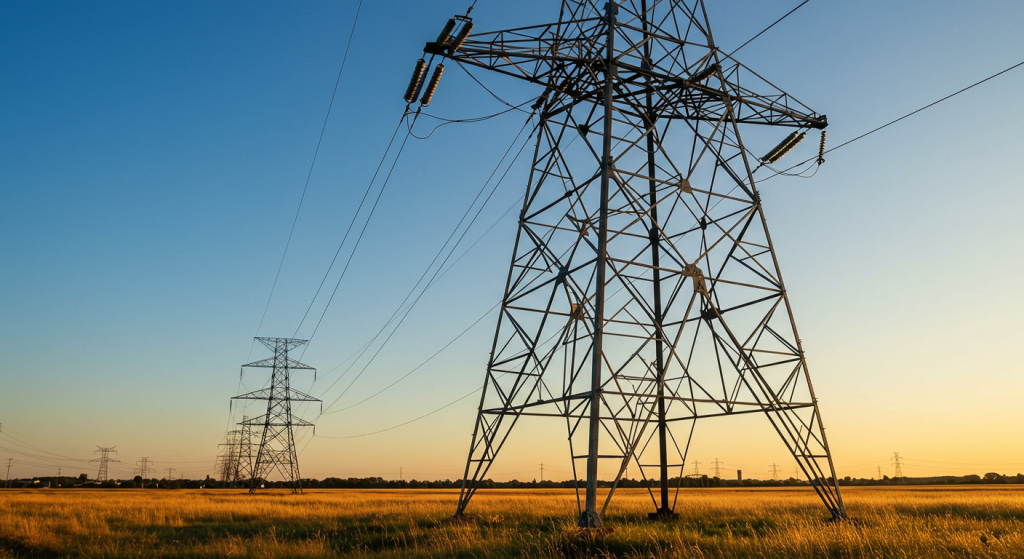Power Transmission Tower: Everything You Need to Know
2025-03-20
Power Transmission Towers: Everything You Need to Know About Power Distribution
Power Transmission Tower is also called High Voltage Towers or Electricity Pylons. No matter how closely they are named, they perform an important long-distance energy transmission role. They’re vital to the distribution of energy.
What are Power Transmission Towers?
A power tower (also called a power transmission pole) is an iron tower that supports power lines. They are found nationwide, transmitting power from one location to another and/or connecting one section of a grid to another. These towers are prevalent in rural areas and urban settings to stabilize interconnected power grid networks.
Different Types of Power Transmission Towers
There are various power towers with specific designs for application in the setting and electrical configurations. Some of the more typical types include:
- Lattice Towers:
The standard configuration of high voltage towers. Made of a steel lattice configuration, which creates stability and strength.
- Monopole Towers:
These single pole towers are mostly found in urban settings as they are more aesthetically pleasing and not as obtrusive.
- Guyed Towers:
These towers are stabilized by cables as additional supports, which are necessary when space is limited or the ground cannot support a heavy structure.
- Self-Supporting Towers:
These towers support themselves as the title implies do not require support cables and are needed for high-voltage lines.
The Role of Power Transmission Towers in the Electrical Grid
They facilitate the long-distance transfer of electricity from generating stations to consumers, allowing for home, business, and industrial access to electricity with minimal dissipation. In addition, these towers are required for any sustainable electrical grid to execute long-distance voltage transformation. They are lattice structures for insulator assemblies preventing circuit overloads and for conductor wires that carry electrical transfer.
- Power Transmission Tower Engineering
Erecting a power transmission tower is more than just putting it up and figuring out to what height and with what hardware; there are engineering formulas at play to assess loads and requirements—from wind load to stability factors.
- Materials of Power Transmission Towers
The kits and materials that comprise the power towers are chosen based on their anticipated capabilities to withstand external forces. For example, due to storms and high winds, many of these towers are made of galvanized steel. Galvanization protects against rust and corrosion, subsequently giving the tower an extended life.
- Tower Foundation and Erection
Similar to any other building erected, the towers themselves are supported by deep-driven foundations, as the tower itself is only part of the support required. The engaged heavy machinery for erection and the physical tower formed in the air by trained professionals attests to adequate sounding tower and adequate loading established.
- Power Transmission Tower Maintenance and Inspection
Transmission towers are maintained and inspected during their lifetime for proper operation. Thus, after the insulator strings, conductor wires, and ground wire are subject to wear and tear, an annual/semiannual inspection is needed to see if additional measures are required. What gets prevented are lives not lost due to outages and system failures.
- Advanced Tower Testing
They undergo testing relative to successful power operation and safety factors. For instance, one would employ finite element analysis to see how a power tower withstands load and wind stresses. This type of testing is what enables these structures to withstand such stresses for many years to come while ensuring nonstop access and functionality.

Environmental Considerations in Tower Construction
The construction of transmission towers occurs with an understanding of the operational environmental issues. For instance, the right-of-way cut does not overly interfere with wildlife or natural growth, and many towers require bird divers as a precaution for birds to prevent accidental collision with the tower. Moreover, the same authorities that maintain regulation of EMF concerns manage those related to human and environmental interference with the towers and transmission lines.
The Future of Power Transmission Towers
The ideas for the power towers of tomorrow go hand in conjunction with projected increases in renewable energy. These towers and smart grids are in global demand, and new tower specifications of the future exist with the potential to transmit energy created from solar and wind.
Integration of Renewable Energy.
Global demand increases for power towers. Power transmission accommodates the transformation of energy to cleaner energy, whether it is energy produced from solar or wind, and needs to go a far distance.
Smart Grid Towers
Smart grids alter the method and location of power transmission and subsequent energy distribution. For instance, power towers are shaped differently, physically, as well. They must withstand a connection to the digital network used to transmit power via smart grids. In addition, smart grids operate remotely and assess needs for power flow and changes in real-time without human interaction.
Where to Purchase Power Transmission Towers?
These transmission tower manufacturers need to be reliable for the proper purchase, and installation costs vary based on the type of tower. For example, the materials used and setting of installation (i.e., urban vs. rural settings).
Looking for a reliable service? XY Tower is your solution for power tower services, including power tower manufacturing and installation.
Power Transmission Tower Installation
Whether you’re adding to your existing network or creating an entirely new approach, power tower installation is required by professionals. Hoisting these massive pieces is only safe through trained professionals. Therefore, professional power tower installation typically begins with flooring and ends with the installation process.
Factors in Choosing Power Transmission Towers
There are factors in choosing these transmission towers, including:
- Tower Load Capacity:
Verify the tower load capacity to support expected loads, including all cable weights, insulators, and subsequent loading from ice and wind.
- Galvanization:
Galvanized steel is usually the preferred choice as it withstands corrosion longer.
- Cost:
Evaluating the ideal transmission tower includes the cost not only for initial installation but also for ongoing repairs and longevity.
Conclusion
It is an integral component of the power system. They fulfill support and transmission requirements and allow long-distance transmission to be safe and efficient. Whether you need to fabricate, erect, or rehabilitate a power transmission tower, reliable transmission tower manufacturers like XY Tower can fit all your needs. The attributes of the power tower and the projections for the future are positive, especially with developments in sustainability.

Привет, я Чуньцзянь Шу
"X.Y. Tower: Надежные, инновационные решения для высококачественных башен и электрооборудования с профессиональным сервисным обслуживанием.
